


Next: One-Shot Images Conveying Shape
Up: Background
Previous: Background
Creating sophisticated paint programs which generate single images and
emulate techniques used by artists for centuries was the focus of
research done by Meier [27], Haeberli [17],
Curtis [10], Salisbury et al. [30,31,32],
and Winkenbach et al. [38]. However, conveying shape and
structure is not the goal of these images.
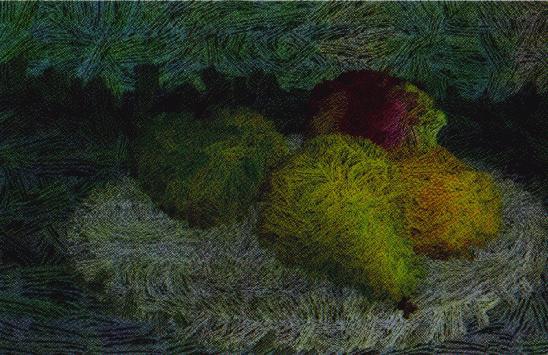 |
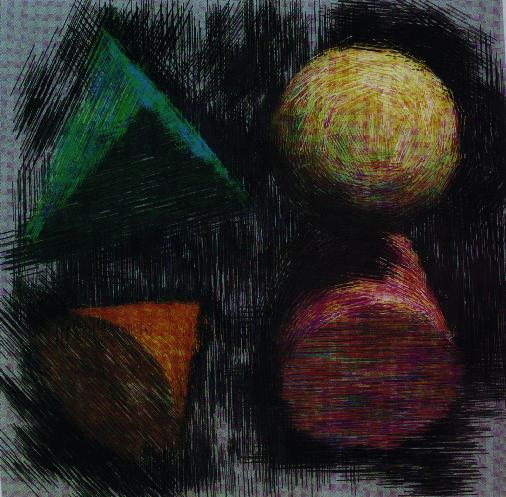 |
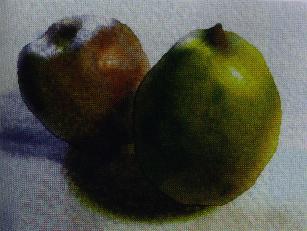 |
| Copyright 1996 Barbara Meier~\cite{meie96}. Used
by permission. |
Copyright 1990 Paul Haeberli~\cite{haeb90}. Used by permission. |
Copyright 1997 Cassidy Curtis~\cite{curt97}. Used by permission. |
|
Figure 2.1. Non-photorealistic one-shot images with a high level
of abstraction. |
Meier [27] presents a technique for rendering animations
in which every frame looks as though it were painted by an artist. She
models the surfaces of 3D objects as 3D particle sets. The surface
area of each triangle is computed, and particles are randomly
distributed. The number of particles per triangle is equal to a ratio
of the surface area of triangle to the surface area of the whole
object. To maintain coherence from one shot of the object to the
next, the random seed is stored for each particle. Particles are
transformed into screen space and sorted with regard to the distance
from viewer. The particles are then painted with 2D paint strokes,
starting farthest from viewer, moving forwards, until everything is
painted. The user determines artistic decisions like light, color,
and brush stroke, similar to most paint programs. The geometric
lighting properties of the surface control the appearance of the brush
strokes.
Haeberli [17] created a paint program which allows the user
to manipulate an image using tools that can change the color and size
of a brush, as well as the direction and shape of the stroke. The goal
of his program is to allow the user to communicate surface color,
surface curvature, center of focus, and location of edges, as well as
eliminate distracting detail, to provide cues about surface orientation
and to influence viewer's perception of the subject. Haeberli studied
the techniques of several artists. He observed that traditional
artists exaggerate important edges. Where dark areas meet light
areas, the dark region is drawn darker and light region is drawn
lighter. This causes the depth relationship between objects in a
scene to be more explicit where they overlap. Haeberli also notes
that artists use color to provide depth cues because, perceptually,
green, cyan, blue (cool-colored) shapes recede, whereas red, orange,
yellow, magenta (warm-colored) objects advance. He commented in his
paper that he used these color depth cues and other techniques to
enhance digital images before the paint begins, but he never provided any
details on how these could be used algorithmically.
The computer-generated watercolor work by Curtis et al. [10]
created a high-end paint program which generates pictures by
interactive painting, or automatic image ``watercolorization'' or 3D
non-photorealistic rendering. Given a 3D geometric scene, they
generate mattes isolating each object and then use the photorealistic
rendering of the scene as the target image. The authors studied the
techniques and physics of watercolor painting to developed algorithms,
which depend on the behavior of the paint, water, and paper. They
provide information on watercolor materials and effects of dry-brush,
edge darkening, backruns, granulation and separation of pigments, flow
patterns, glazing, washes.
Salisbury et al. [32,30,31] designed an interactive
system which allows users to paint with stroke textures to create
pen-and-ink style illustrations, as shown in
Figure 2.2(a). Using ``stroke textures,'' the user can
interactively create images similar to pen-and-ink drawings of an
illustrator by placing the stroke textures. Their system supports
scanned or rendered images which the user can reference as guides for
outline and tone (intensity) [32]. In their paper,
``Scale-Dependent Reproduction of Pen-and-Ink
Illustrations'' [30], they gave a new reconstruction
algorithm that magnifies the low-resolution image while keeping the
resulting image sharp along discontinuities. Scalability makes it
really easy to incorporate pen-and-ink style image in printed media.
Their ``Orientable Textures for Image-Based Pen-and-Ink
Illustration'' [31] paper added high-level tools so the user
could specify the texture orientation as well as new stroke
textures. The end result is a compelling 2D pen-and-ink illustration.
Winkenbach et al. [38] itemized rules and traditions of
hand-drawn black-and-white illustrations and incorporated a large
number of those principles into an automated rendering system. To
render a scene, visible surfaces and shadow polygons are computed. The
polygons are projected to normalized device coordinate space and then
used to build a 2D BSP (binary space partition) tree and planar
map. Visible surfaces are rendered, and textures and strokes applied
to surfaces using set operations on the 2D BSP tree. Afterwards,
outline strokes are added. Their system allows the user to specify
where the detail lies. They also take into consideration the viewing
direction of user, in addition to the light source. They are limited
by a library of ``stroke textures.'' Their process takes about 30
minutes to compute and print out the resulting image, as shown in
Figure 2.2(b).
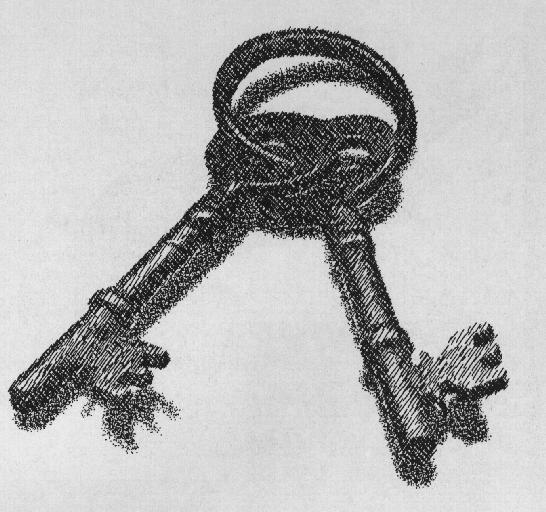
| 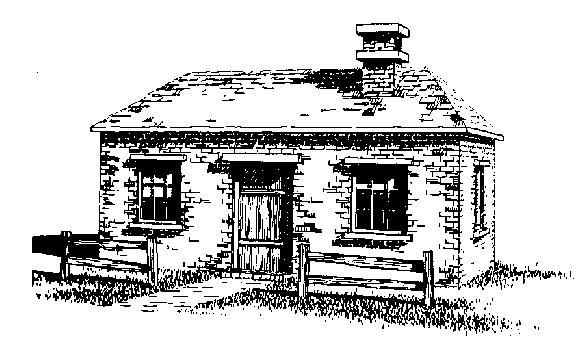
|
|
|
|
Pen-and-Ink Illustration. Copyright 1996
Michael Salisbury~\cite{sali96}}. Used by permission.
|
Pen-and-Ink Illustration. Copyright 1994 Georges
Winkenbach~\cite{wink94}}. Used by permission. |
Figure 2.2: Computer-generated pen-and-ink illustrations.



Next: One-Shot Images Conveying Shape
Up: Background
Previous: Background




